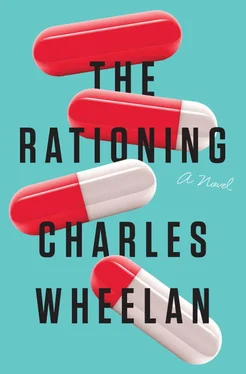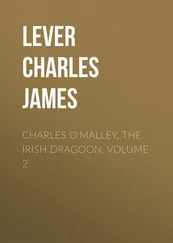The second story sucking up airtime was a bizarre kidnapping in Germany. An aggrieved scientist with some serious mental health issues had stormed the podium at a political rally near Munich. Before anyone knew what was happening, the guy jumped up onstage with what looked like a small syringe. There was video of all this, which explained part of the appeal of the story. The crazed scientist, who had been fired from his university post some years before, had a long white beard and frantic eyes. As the startled crowd looked on, the scientist poked the speaker, the CEO of a major agribusiness company, with the small syringe, jamming the pointed end through the man’s suit into his upper arm. The CEO looked more perplexed than pained after he had been poked in the arm. There was no shooting or gore. Local police stormed on the stage and the wild professor left willingly with them.
That, however, was when the story took a turn for the bizarre, as all the news channels were reporting. Once in custody, the scientist explained that he had injected the CEO with a slow-acting toxin of some sort for which only he would be able to provide the antidote. The mad scientist reportedly sat calmly in the police station, explaining to officers that if they wanted the CEO to live, they would have to honor his demands. The former professor had been in the chemistry department at a university in Berlin; there was no doubt that he had the expertise to concoct some fatal formula. Experts had no idea what it might be, however. The scientist intimated that he had used some combination of snake venoms. The CEO was rushed to a hospital, where he developed nausea and a mild fever. Needless to say, he was frantically urging authorities to do whatever it would take to procure the antidote.
The scientist, sitting in the police station, made what he said would be the first of several demands: He wanted an ice-cream cone—a strawberry ice-cream cone, to be more precise. And he wanted to walk freely with police officers to get it. He did not want them to bring his ice-cream cone to the station, and he did not want to walk to the ice-cream parlor in handcuffs. This demand set off a wave of protest and debate in the law enforcement community, not just in Germany but around the world. Germany had a strict policy against publicly negotiating with terrorists; the mad professor’s act had been declared terrorism, mostly for the lack of a more appropriate description of his bizarre behavior. Would it violate Germany’s policy to give the guy his strawberry ice cream? German police officers argued that giving their suspect ice cream was not radically different than giving a suspect a cup of coffee or a cigarette to encourage cooperation.
Right-wing pundits everywhere argued that acceding to the ice-cream demand would encourage the “terrorist” to make more outrageous demands. This prompted the FBI Director’s now-famous retort, “If we give him an ice-cream cone now, we can always say no if he asks for the release of one hundred Hamas prisoners in the future.” There was a robust debate in the media over whether torture would be appropriate in this kind of situation—the poison equivalent of the “ticking bomb” that U.S. presidential candidates are always asked about—but Germany forbade torture under any circumstances, so as a practical matter this was a nonstarter. Meanwhile, the CEO, growing more ill by the minute, was apoplectic that he might expire for lack of a strawberry ice-cream cone.
The story was packaged beautifully for global attention: the mad scientist perpetrator; the privileged CEO victim, waiting anxiously for the antidote; the bizarre ice-cream cone request. The situation grew weirder still when authorities realized that strawberries were not yet in season and none of the ice-cream shops in the neighborhood had strawberry ice cream. When informed of this snafu, the scientist apologized for being difficult and said that chocolate almond would be fine. CNN’s Jake Tapper would later say this was the single most bizarre news development he had ever reported on air. Camera crews followed the scientist and police as they strolled several blocks to a small ice-cream shop, where a terribly nervous young girl with bad skin stood behind the counter. (All of the customers had been cleared out.) The police commissioner asked her for a scoop of chocolate almond ice cream.
“Might I have two scoops?” the scientist interjected.
“Of course,” the police commissioner replied. (Even this decision would be debated later, with one semi-hinged Fox pundit declaring that it validated his assertion that giving in to the ice-cream request would lead to escalating demands.) The poor young ice-cream clerk stood there paralyzed. The police commissioner said more emphatically, “Two scoops of chocolate almond, please.”
The young girl stammered, “In a cone or a cup?”
“A cone, please,” the scientist answered politely. As she scooped, her arm trembling visibly and with millions of people watching live around the globe, the scientist reached into his pocket and put a one-euro coin in the tip jar. By this time, his family had contacted authorities to inform them what they were already beginning to suspect, namely that the man was unbalanced but harmless. The syringe had been rushed off to a laboratory for analysis, and just as the mad scientist was finishing the last of his sugar cone, a laboratory official called police to tell them it contained nothing more than saline. The CEO’s nausea (he had been vomiting repeatedly) was entirely psychosomatic, which one can understand given the circumstances.
The mad scientist was transfixing. The video clip of him ordering ice cream was viewed over twenty million times. The phrase “Might I have two scoops?” entered the lexicon; young people used it in an ironic way in all kinds of circumstances. There was even a temporary surge in the popularity of chocolate almond ice cream. More serious people recognized the cleverness of the scientist’s fake scheme: infecting a victim (or millions of victims) and then using the antidote as leverage. The press clamored for evidence that the Capellaviridae was not a similar terrorist plot, leaving the Communications Director with the impossible task of proving a negative. “We have no evidence whatsoever that any human actors are involved in any criminal actions related to Capellaviridae ,” he declared at an impromptu press briefing at the rear of Air Force One. “None. No ransom request, no biological evidence—nothing.”
“But it’s possible?” a Fox reporter asked.
The Communications Director, who had been sleeping even less than the President, snarled back, “Look, it’s possible this virus came to earth on a secret spaceship from Mars. I can’t prove it didn’t.”
Upon reading this exchange, a new and very young Ukrainian correspondent failed to recognize the Communication Director’s use of satire to make his point and reported earnestly back to her national news wire that the White House now believed it was possible that aliens may have introduced Capellaviridae to our planet. Several Ukrainian radio stations reported the story before the State Department set them straight. Meanwhile, the Onion —still the best source for real fake news—found dark humor in the Outbreak. The headline of the most recent issue proclaimed, “God Says Capellaviridae Is Punishment for Bears Not Winning Super Bowl.” The Bears had lost to the Broncos in a Super Bowl blowout a few months earlier; the Bears coach was a very religious man who wore that religion on both sleeves. Before the game, not only did he lead his team in prayer on the sidelines, but he told reporters, “I am certain that the Man Upstairs will lead us to victory.” In fact, God allowed the Bears defense to give up over five hundred passing yards and forty-one points. The Onion had been mining this humor trove for some time, beginning with the first headline after the game: “Man Upstairs Apologizes to Bears Fans for Crappy Pass Rush.”
Читать дальше












